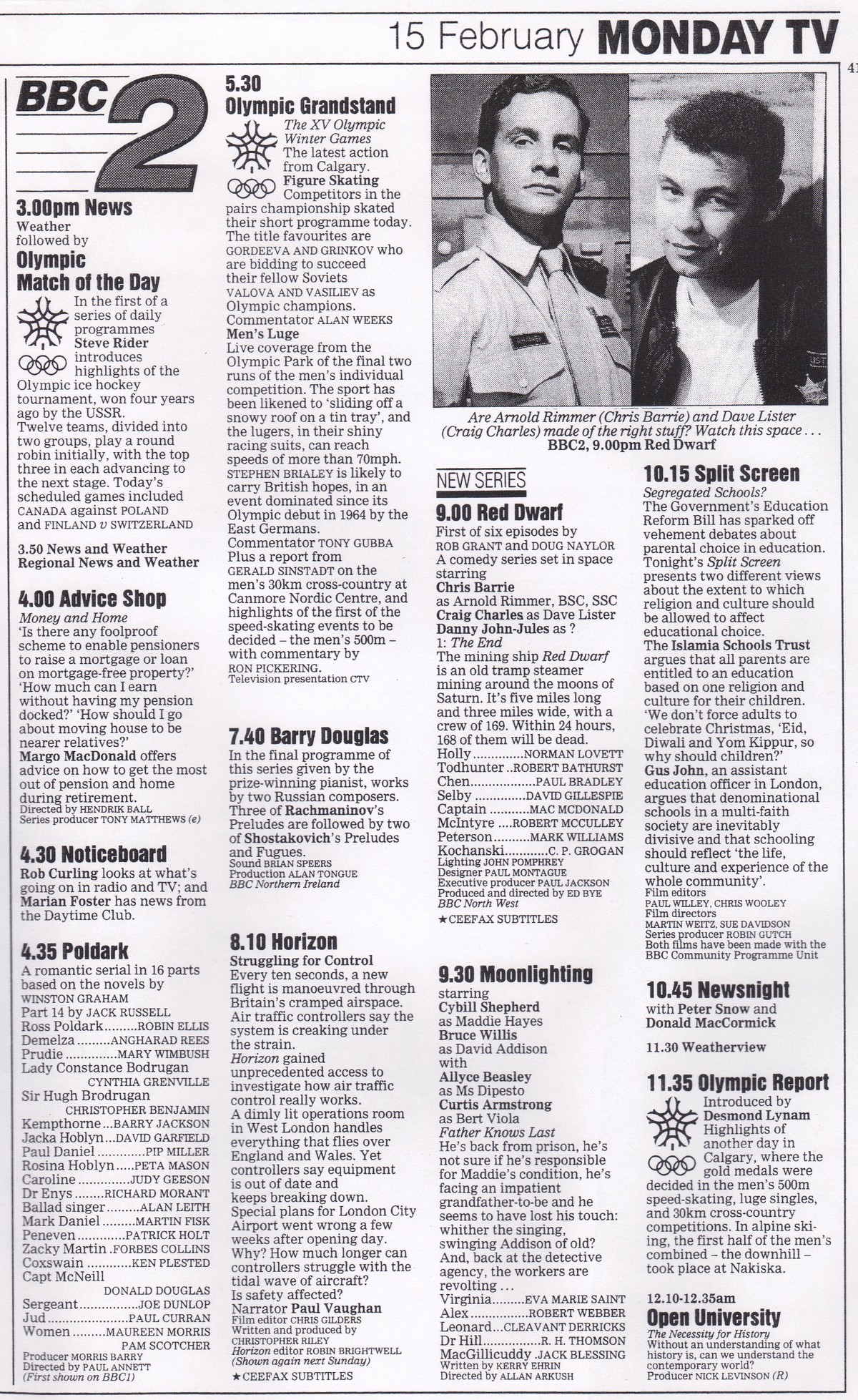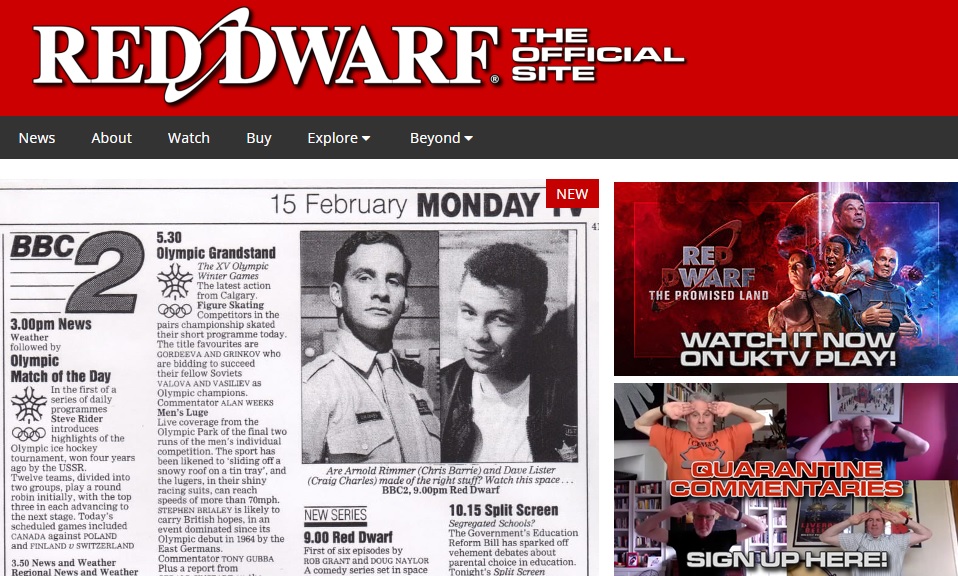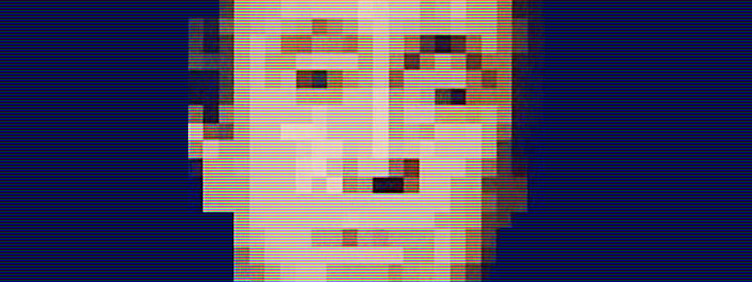Last month saw the 35th anniversary of Red Dwarf. For someone who vaguely left organised fandom a few years back, I seem to still do an awful lot of writing about the show. What can I say? I fell in love with it when I was 13, and I still indulge in an awful lot of nasty habits which started around that age.
I also wrote for Dwarf fan site Ganymede & Titan between 2003 and 2020, which is a quite startlingly long time. One day in the mid-2000s – the exact year escapes me – my co-conspirator Ian Symes and I decided to take a trip to that great concrete block, since demolished, that was Birmingham Central Library. There, they had an almost-complete set of Radio Times issues, which we set to photocopying with aplomb. We had all kinds of plans.
Those plans never really came to fruition, because of course they didn’t, this is me we’re talking about. But in 2012, I came across that stack of photocopies, and thought it was worth posting one of them on its own – the original Radio Times capsule for the very first episode of Red Dwarf, “The End” (TX: 15/2/88).
As well as the capsule itself, I also posted the full Radio Times page for that day:

And there that scan sat on Ganymede & Titan, quietly causing no bother, until the 35th anniversary. When Rob Grant tweeted the image, followed shortly by the official Red Dwarf site using it, as part of a hopeful message about there being more Red Dwarf in the future. And it’s definitely, 100% the same image – it matches my scan perfectly.

Which I find very strange. Not because of any ludicrous idea that I own copyright to the image or anything. I just find it intensely weird that my love of the show has gone from squinting at it on an old black and white telly in my bedroom in 1994, to rummaging through Radio Times back issues in the mid-2000s, to something that I dug out suddenly being randomly used as part of an official announcement about the show.
The thing I never could have predicted when I was 13, is that you truly can become part of what you love. A tiny, tiny part, maybe. But sitting in my bedroom, that idea didn’t even cross my mind. Millions of people watched Red Dwarf, how would anything I ever did ever be noticed?
But fandom does weird things. It turns millions of people into just a few. And it ends up having bizarre, unpredictable effects. Even after years of this stuff – interviewing Doug Naylor, appearing in fan films which got an official release, Ganymede & Titan being mentioned in DVD commentaries – I’ve never quite got used to it.
Mind you, I’m still not entirely sure how I ended up directing BBC One on a Saturday night, either.
A version of this post was first published in the February issue of my monthly newsletter.
Read more about...
red dwarf



